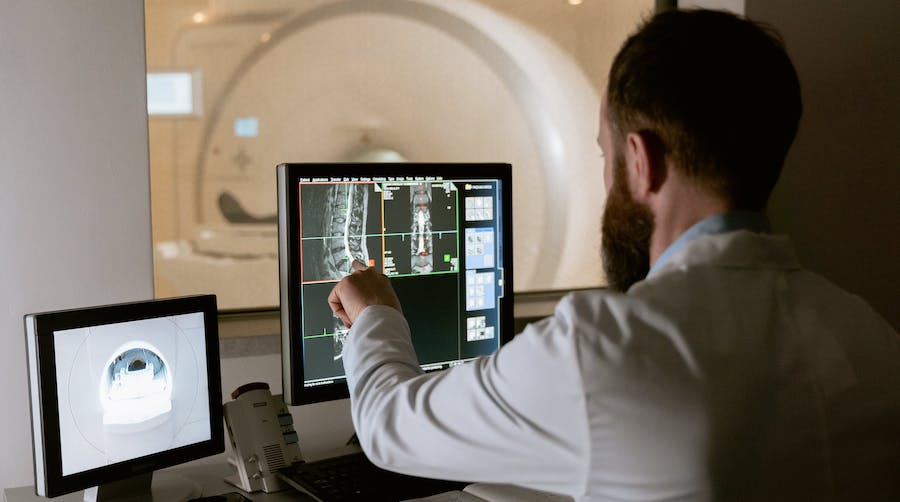REEs used in medical field pollute wastewater, spur superbugs

Pollution from environmental rare earth elements (REEs) has increased due to the widespread use of these metals in medical applications. This has implications for the development of superbugs, new research has found.
According to a paper published in the journal Frontiers of Environmental Science & Engineering, gadolinium (Gd) is commonly used in contrast agents and is released as a toxic monomer. Previous studies have detected the presence of Gd in both the influent and effluent of wastewater treatment plants. In addition, different types of antibiotics were detected in these waters, with some antibiotic concentrations being detected at mg/L levels.
The article notes that the accumulation of antibiotics in wastewater treatment plants is detrimental to microorganisms and negatively impacts these facilities’ performance.
In the researchers’ view, the combined pollution of REEs and antibiotics in wastewater cannot be ignored, especially in the context of the covid-19 pandemic. Notably, due to the increased risk of bacterial infections, medical institutions need more sulfamethoxazole (SMX) to treat infected patients.
Magnetic resonance imaging enables visualization of pulmonary structures and assessment of covid-19-related lung damage, inflammation, and complications like thrombosis and myocarditis. Gd is a key component of contrast agents in MRI, and the increased demand for MRI detection leads to an increase in the use of Gd. Therefore, Gd and SMX have been extensively used during this pandemic. However, the impact of co-occurring Gd and SMX in wastewater on bacterial resistance in wastewater plants remains unclear.
Superbugs
The Frontiers paper points out that there are similar situations that can be looked at. For example, the long-term use of antibiotics in medical, agricultural, animal husbandry, and aquaculture industries has proven to eventually lead to the dissemination of antibiotic-resistant genes (ARGs).
ARGs pose a serious threat to human health and environmental safety. Therefore, many researchers have studied the effects of antibiotics on ARGs in wastewater treatment systems.
Scientists have also noted that heavy metals drive the co-selection of ARGs and heavy-metal-resistant genes (MRGs). Previous research has also reported an increased relative abundance of ARGs and MRGs in heavy metal-polluted environments, and high concentrations of metals could promote multi-metal and multi-antibiotic resistance.
Yet, only a few reports have investigated the effects of Gd on ARGs and MRGs, and the succession and transmission characteristics of resistant genes under combined Gd and antibiotics exposure remain unclear.
Quantitative polymerase chain reaction (qPCR) and 16S rRNA gene high-throughput sequencing can quantify some known ARGs and MRGs. Still, the mobility of ARGs and the correlation with host bacteria are also little understood.
Filling the gap
The work of Kangping Cui’s team fills the knowledge gap.
In the new study, the group investigated the co-occurrence of Gd and SMX in wastewater pollution by applying metagenomics to analyze the mechanisms of changes in ARGs, MRGs and genera in an activated sludge system.
This study offers an in-depth and new understanding of the mechanisms underlying the changes and interactions between antibiotic-resistant genes and heavy-metal-resistant genes in activated sludge, providing technical support for the removal of ARGs and MRGs in wastewater treatment plants.
The findings demonstrated that single SMX alone and co-occurrence of SMX and Gd(III) resulted in an increase in the abundance of ARGs, while most MRGs decreased in abundance.
At the same time, the co-occurrence of sulfamethoxazole and Gd(III) significantly promoted the HGT of antibiotic-resistant genes or ARGs and heavy-metal-resistant genes or MRGs. Gd(III) alone caused a decrease in ARGs and MRGs, whereas the abundance of Hg MRGs was increased.
Compared to core heavy-metal-resistant genes, core antibiotic-resistant genes exert a greater negative effect in the presence of Gd or sulfamethoxazole alone.
Streptomyces, Pseudomonas, and Thauera were abundant under sulfamethoxazole exposure and may be potential hosts for ARGs and MRGs. The bacterial community was sensitive to single Gd(III) stress.
The correlations among ARGs, MRGs, mobile genetic elements (MGEs), and the bacterial community were discussed in this study, suggesting a positive relationship between internal ARGs and MGEs, while positive and negative relations were found in MRGs. Moreover, most ARGs and MRGs were closely related to MGEs.
{{ commodity.name }}
{{ post.title }}
{{ post.date }}

Comments